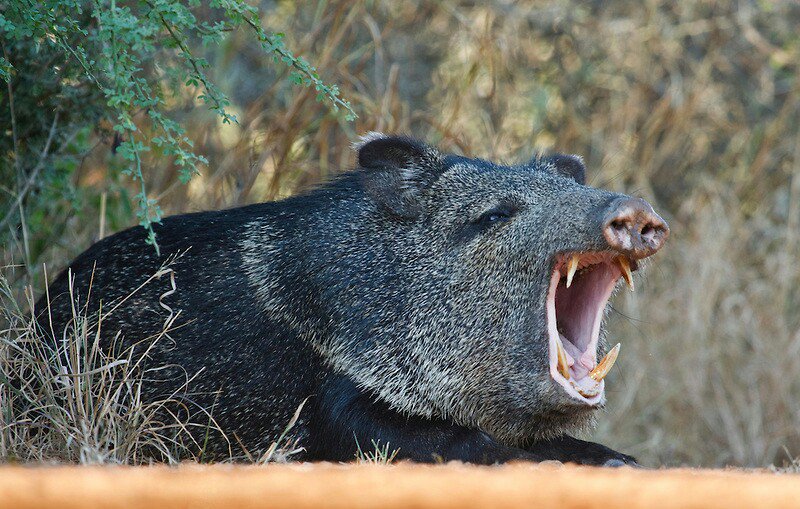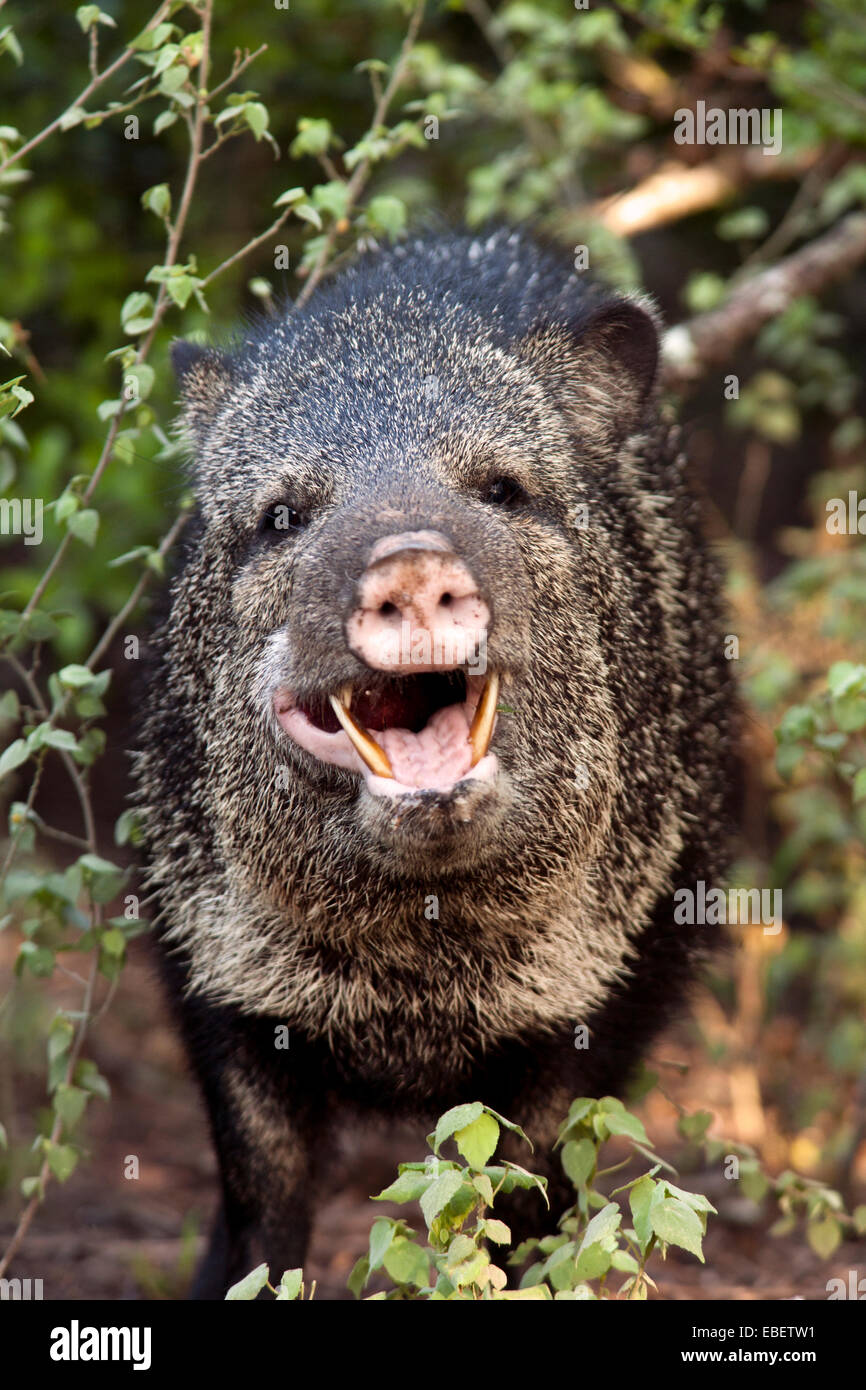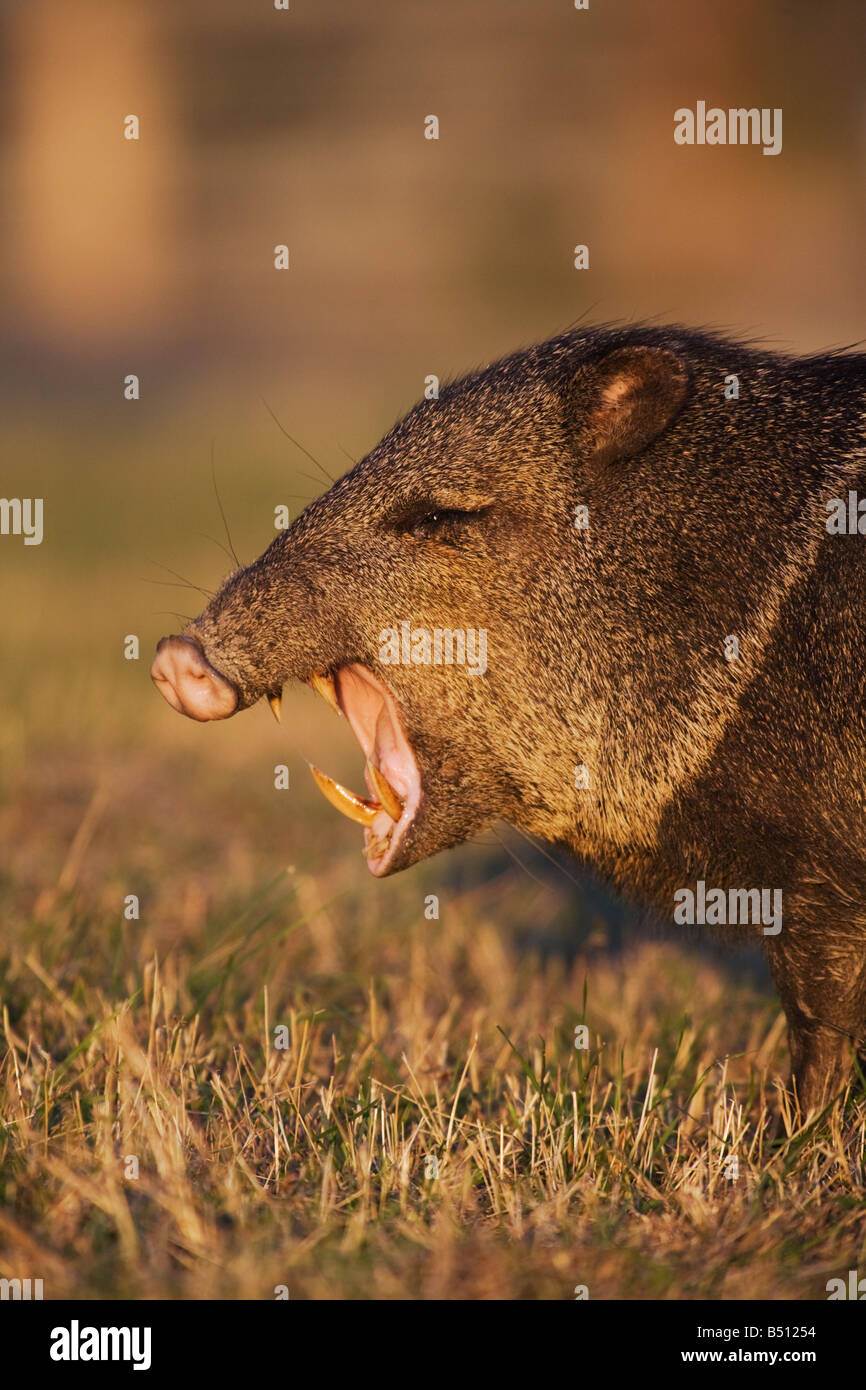Javelina Teeth: Unpacking The Secrets Of Their Remarkable Design
You might have seen a javelina before, perhaps wandering through the desert landscape, and in a way, you might have even mistaken it for a wild pig. However, these animals, which are actually collared peccaries, have some truly unique features that set them apart, especially when it comes to their mouths. Their teeth, you know, are pretty special, and they play a big part in how these creatures live their lives.
These fascinating animals, often called javelina, saíno, taitetu, or báquiro, are the only member of their particular genus, *Dicotyles*. So, they're quite distinct, really. Their physical traits, like the hair around their neck that looks like a collar, are just one piece of the puzzle, but their teeth are arguably even more interesting.
Understanding the design and purpose of javelina teeth helps us appreciate these creatures a bit more, too. From how they eat their favorite prickly pear cactus to how they protect themselves, their dental setup is quite a marvel, and we will explore all of that here.
Table of Contents
- The Javelina's Unique Identity
- A Closer Look at Javelina Teeth
- Teeth as Tools for Survival
- Common Misconceptions and Interesting Facts
- Frequently Asked Questions About Javelina Teeth
- Final Observations on These Remarkable Animals
The Javelina's Unique Identity
A javelina is, as a matter of fact, a collared peccary, known scientifically as *Tayassu tajacu*. They are native to places like Arizona, New Mexico, Texas, and also throughout South America, you know. They are sometimes called the musk hog, too, which is another common name for them.
It's interesting because these animals are often mistaken for pigs, but they’re not that closely related, you see. They belong to their own special group, being the only member of the genus *Dicotyles*. This really sets them apart in the animal kingdom, and that.
Their appearance, with that lighter hair around the neck and shoulder area, gives them the look of a collar, which is where they get the "collared" part of their common name, really. This physical trait, along with their distinct teeth, helps them survive in many different places, too.
A Closer Look at Javelina Teeth
The dental arrangement of a javelina is, arguably, one of its most defining features. It's a key part of their anatomy, and it truly shapes how they interact with their environment, so. These teeth are quite different from many other animals you might think of.
Modified Canines: The Spear-Like Tusks
Javelinas possess canine teeth that are, in fact, quite well developed for cutting and slashing. These teeth, which continuously grow, become dangerous weapons when the javelina feels threatened, you know. They are truly built for action.
These specific teeth, which are actually modified canine teeth, protrude vertically out of the mouth, as a matter of fact. This vertical growth can sometimes cause the animal to have multiple lumps throughout its lips, which are noticeable to anyone looking closely, you know.
The javelina gets its common name from these very tusks, which comes from a Spanish word for "spear," as I was saying. These tusks also serve as their primary defense, and they use them for digging, too, which is pretty useful.
It's important to note that these types of teeth are mostly found in carnivore animals so that they can tear meat or any of their food better. For a javelina, this design helps them manage their diet, which includes some rather tough plant material, too.
Development and Maturity
When it comes to their dental growth, javelinas have all their adult teeth by approximately 21 months of age, in fact. This means they develop their full set of working teeth fairly early in their lives, you see.
Information about their dental development, like this, has been gathered from things like hunter check station data for adult javelina, so. This kind of data helps us understand their life cycle and growth patterns, which is pretty neat.
Knowing when their teeth are fully grown gives us a better picture of their maturity and when they are ready to handle the full range of foods and defensive actions that their teeth allow, too. It’s a key milestone for them, arguably.
Fewer Teeth Than Pigs
One of the ways javelinas are different from true pigs is that the javelina also has a more complex stomach and fewer teeth, you know. This is a significant distinction, really, given how often they are confused with pigs.
The fact that they have fewer teeth suggests a different kind of dietary processing compared to their pig relatives, so. This difference in dental count is a clear indicator of their distinct evolutionary path, too.
This characteristic, fewer teeth, highlights their unique place in the animal kingdom and how they have adapted to their specific environments and food sources, as a matter of fact. It's not just a small detail, but a really important one, you know.
Teeth as Tools for Survival
The teeth of a javelina are not just for eating; they are, in fact, absolutely central to their survival. They play a role in how they protect themselves and how they find and consume their meals, too.
Defense Mechanisms
If javelinas feel threatened or startled, they can become very defensive, you know. Their teeth are a big part of this response. They might growl, bark, or even snap their teeth together, as a matter of fact.
Sometimes, if they feel truly cornered, they may even charge, using those spear-like tusks to defend themselves, too. These teeth become dangerous weapons in such situations, really, showing their importance for protection.
While they often run away and scatter when threatened, on rare occasions, they will stand together to face a perceived danger, so. In these moments, their ability to use their teeth for defense is clearly vital, you know.
Foraging and Diet
One of the javelina's favorite foods is the prickly pear cactus, which is a pretty tough plant, you know. Their specialized teeth are perfectly suited for breaking down this kind of vegetation, too.
The cutting and slashing capability of their canine teeth allows them to process the fibrous parts of plants like the prickly pear, so. This helps them get the nutrients they need from their desert diet, too.
Their teeth are, in a way, like built-in tools for foraging, allowing them to dig for roots and tubers, and also to handle the various plants that make up their diet. It's a very practical design, arguably.
Common Misconceptions and Interesting Facts
There are quite a few things people get wrong about javelinas, and honestly, it’s mostly because they look a bit like pigs, you know. But as we've discussed, they're really not the same at all, as a matter of fact.
The minimal sexual dimorphism in collared peccaries means that males and females look very similar, so. This can sometimes make it a bit harder to tell them apart just by looking, too.
In the late 1800s and early 1900s, javelina hides were shipped east and to Europe for things like gloves and hairbrushes, you know. The hides were even used as barter in many trading posts along the U.S. border, too. This shows how they were valued in different ways back then.
It’s fascinating to consider how these animals, with their unique teeth and other traits, have played a role in both the natural world and human history, too. They are truly more than meets the eye, you know.
Frequently Asked Questions About Javelina Teeth
Here are some common questions people ask about javelina teeth:
Are javelina teeth like pig teeth?
No, not exactly. While they might look a bit similar, javelinas actually have fewer teeth than true pigs, and their stomach is more complex, too. Their tusks are modified canine teeth that grow vertically, which is a key difference, you know. Learn more about javelina characteristics on our site.
What do javelinas use their tusks for?
Javelinas use their tusks, which are their modified canine teeth, for several things. They are their primary defense mechanism, used for cutting, slashing, and even charging when threatened, you know. They also use them for digging to find food, too.
When do javelinas get their adult teeth?
Javelinas typically have all their adult teeth by the time they are approximately 21 months of age, as a matter of fact. This is when their dental development is mostly complete, too.
Final Observations on These Remarkable Animals
Observing the javelina, with its unique teeth and adaptations, gives us a really good look at how animals survive and thrive in their environments, you know. Their specialized tusks are truly a testament to their ability to defend themselves and find food, too.
These creatures, often misunderstood, are a vital part of the ecosystems they call home, so. Understanding their dental features helps us appreciate their place in the natural world, and that.
We can all take a moment to learn more about these fascinating collared peccaries and the remarkable ways they navigate their lives, you know. Perhaps you could explore more about javelina behaviors and habitats to deepen your understanding, or check out this page for more details.

Javelina Teeth

Javelina or Collared Peccary - Camp Lula Sams - Brownsville, Texas USA

Javelina Teeth